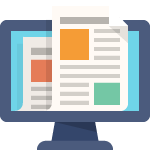Implementing Multisensory Techniques in Reading Instruction: Enhancing Literacy Through Engaging Strategies
Reading is a fundamental skill that forms the bedrock of academic success and lifelong learning. Recognizing the diverse ways in which students absorb and process information, educators are increasingly turning to multisensory techniques in reading instruction to create inclusive and effective learning environments. In this exploration, we’ll delve into the benefits of incorporating multisensory approaches and provide practical strategies and activities that educators can implement to engage students with different learning styles.
Benefits of Multisensory Reading Instruction
Catering to Diverse Learning Styles
Students have varied learning preferences and strengths. Some are visual learners, while others may excel through auditory or kinesthetic approaches. Multisensory instruction accommodates these differences, providing a more comprehensive learning experience.
Enhanced Memory Retention
Engaging multiple senses during reading instruction enhances memory retention. When students see, hear, and physically interact with the material, they are more likely to remember and comprehend the information.
Improved Phonemic Awareness
Multisensory techniques are particularly effective in developing phonemic awareness; the ability to recognize and manipulate individual sounds in words. Activities that involve seeing, hearing, and feeling the sounds contribute to stronger foundational literacy skills.
Increased Motivation and Engagement
Incorporating sensory-rich activities into reading instruction makes learning more enjoyable and dynamic. This heightened engagement often leads to increased motivation and a positive attitude toward reading.
Support for Students with Learning Differences
Multisensory approaches are particularly beneficial for students with learning differences, such as dyslexia. By tapping into various senses, these techniques provide alternative pathways for understanding and processing information.



